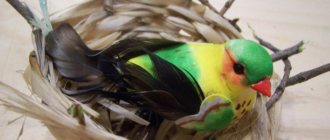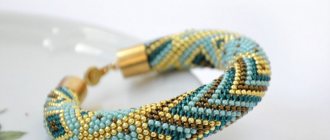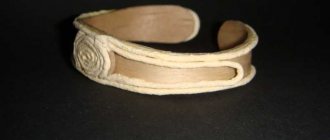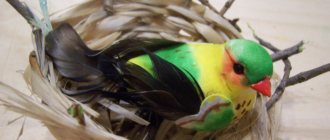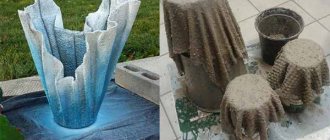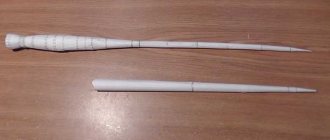The time has come to install the TV cable. I plan to have a lot of TVs. The city is 40 km away. The broadcaster is even further away. The task is to provide televisions with stable reception of the DVB-T2 signal. I will use signal dividers, which will further weaken the signal received by the antenna. There is a need to use a DVB-T2 antenna amplifier . Since the frequencies of both DVB-T2 packages are in the UHF range, I looked at a directional, passive UHF antenna with a gain of 14 dB.
A large distance to the translator and dividing the signal into several TVs will greatly weaken the signal, so you can’t do without a UHF antenna amplifier, also known as a DVB-T2 amplifier. I decided to make an antenna amplifier for DVB-T2 with my own hands and see what comes of it.
Since standard signal dividers, including those that I purchased, do not pass electric current, powering the amplifier via a cable will not work (or the power must be routed via cable to the divider).
How to make an antenna amplifier with your own hands
Not everyone can independently assemble even the simplest amplifier from radio components for an antenna with their own hands. However, such a device, such as an antenna amplifier for a TV in the country, can be made from improvised materials, for example, from beer cans. It will take very little time to make such an amplifier, but the results are quite good. Using this design allows you to achieve a higher quality picture, minimize noise and detect a larger number of channels.
Before making an amplifier, you need to stock up on two beer cans, a power cable, a plug, and screws. Additionally, you will need a screwdriver, electrical tape and a flat wooden stick.
A homemade antenna amplifier is assembled in the following order:
- Tin cans are screwed to a wooden stick using electrical tape so that a distance of 7-8 cm is maintained between them. If the original rings on the cans are still intact, then they are best used to secure the cable.
- If there are no rings, you should screw self-tapping screws into each can and attach the stripped ends of the cable to them. The wooden stick and cable are also connected with electrical tape, which makes the structure more stable.
- To protect from external influences, both cans can be covered with a plastic bottle, the bottom and neck of which have been previously cut off. A hole is cut in the center of the bottle for the cable.
- The finished structure needs to be connected and configured. A homemade TV antenna amplifier can be improved by adding additional sections to it. Setting up equipment for a TV with your own hands is done by changing the distance between the banks. If the diameter of the can increases, then, accordingly, the signal bandwidth will increase.
Beer cans (Pepsi-Cola cans work too)
Why is this material so popular?
- firstly, the missing segment sizes are compensated by a large receiving area: if you unfold the can into a plane, you get a standard sheet;
- secondly, aluminum has excellent conductivity, falling slightly short of copper: accordingly, resistance losses will be minimal;
- thirdly, the aerodynamic shape reduces windage (which is especially important when placed outdoors), and the lightness of the structure does not require particularly strong fastening;
- and, finally, this is an affordable and absolutely free raw material; in addition, lacquered aluminum perfectly resists the influence of moisture.
Important!
Before making an antenna out of beer cans, make sure that there are no high-rise buildings between the television center and the reception point that could block the signal.
Despite the relatively high reception quality, this design does not have a high self-gain factor. Connecting a standard amplifier may not have an effect due to the complexity of selecting coefficients.
Necessary materials:
- Two identical liter beer cans, washed and dried. As a last resort, you can use half-liter ones, but the reception range will be reduced.
- Antenna cable RK-75 of the required length (a design with a wiring length of more than 10 meters will most likely not provide reliable reception).
- Antenna plug to match your TV.
- A dielectric fastening bracket for fastening cans: a wooden block, clothes hangers, a plastic pipe (metal-plastic will not work).
- Fastening elements: electrical tape, tape, or plastic clamps.
- Soldering iron, standard solder, flux for soldering aluminum.
- Knife, side cutters, sandpaper.
There is no point in describing formulas for calculating sizes based on the reception frequency; anyway, it will not be possible to change the sizes of the segments. This DIY antenna made from beer cans has been tested many times under various conditions, so we’ll just use a ready-made sample.
- How to strengthen a phone signal: reasons for a bad signal and solving the problem yourself
We cut the antenna cable. There will be a plug at one end, open the other end so that there is at least 100 mm from the central core to the screen wound into a bundle. To prevent the “bare” braid from being exposed to corrosion, it can be hidden in a heat-shrinkable casing.
We clean the areas for soldering the cable: at the upper ends of the cans. Fine sandpaper is suitable for this.
Important:
Stripping is carried out immediately before soldering and to the “bare” metal.
We roll each end of the wire into a ring 3–5 mm in diameter and carefully coat it with solder. Then we screw the resulting terminal to the can using a galvanized self-tapping screw. After that, we clean the joints with flux and solder until the solder “sticks” normally.
We fix the cans (from the point of view of the theory of radio reception, these are now symmetrical vibrators) so that there is exactly 75 mm between the ends with the cable. This is the optimal gap for receiving analog and digital television.
An important step: setting up the product for optimal TV signal reception. Most likely, you know the direction to the broadcast center tower. If not, Yandex cards will help you. Find a television center, your home, and conduct a virtual live broadcast. If you don’t want to bother with azimuth (this is impossible without a compass), determine the direction reference within your visibility zone. For example, a boiler room pipe or another object. For reliable reception, the home TV antenna is positioned strictly perpendicular to the vector to the tower, and horizontally.
If the signal is received reliably, you were lucky the first time. At a considerable distance from the transmitter, you can catch the reflected signal. Even a simple antenna made from cans requires correct orientation in space (although it is not a satellite dish). In an area of uncertain reception, all-wave technology can unexpectedly “shoot” in any direction.
A do-it-yourself “beer” decimeter antenna allows you to confidently catch analogue channels. How to make an antenna for digital TV? No additional secrets. Digital broadcasting is produced in the same range. If you have a DVB-T2 tuner, you can tune in to one or two multiplexes, and receive a free set of Russian channels on beer cans.
Information:
If the signal strength is still not enough, you can make an antenna amplifier yourself.
Typical diagram in the illustration:
- External antenna for a router: why is it needed and how to optimally install it
However, in order to solder and configure such a device yourself, basic knowledge of radio engineering is required. Still, it’s easier to buy a ready-made device, especially since you’ve already saved on the antenna.
DIY antenna amplifier diagram and description
The antenna amplifier diagram below shows how it should actually be connected to the TV. The TV cable itself passes through the amplifier board, and only then the signal enters the TV.
When making an antenna amplifier with your own hands, you will not need any special materials - mainly, you will need to purchase radio-electronic components, the location of which is shown in the diagram. T1 transistor 2sc3358 - one of the main parts of the circuit of the future device C1 - 10mF / 35v C2, C9 - 1nF C3, C4 - 10 nF C5, C6, C7, C8 - 10 pF - capacitors for surface mounting Resistors R1 - 470 Ohm R2 - 2.2 kOhm, R3 - 1 kOhm, R1 - 5 kOhm Elements L1, L2 - 2 turns 0.5 mm, 3 mm. L3, L4 - 10uH or 10 turns, 0.2 mm on ferrite. 12 volt power supply. On request – with adjustable voltage supply.
Amplifier PCB:
Once again, pay attention to the power supply - 12 volts, which means the need to use capacitors when connecting the assembled device to the power supply. Also, a do-it-yourself TV antenna amplifier can be powered using the antenna cable itself (coaxial cable) if the required voltage is available
After assembly, the board looks like this:
Adjustment of the manufactured amplifier is carried out by moving resistor R1 to the middle position, and then adjusting it after it has been possible to obtain a normal image on the TV screen. After the antenna with amplifier has been assembled and tested with your own hands, you can and should place it in a small metal box, which, in addition, will shield the device from extraneous radiation.
The given method is not the only one possible. With absolutely the same basic diagram, it is permissible to change the elements used in it - this will largely depend on the strength of the signal coming to the television antenna. In turn, the signal is attenuated when passing through the antenna cable - the longer the cable, the weaker the output signal will be. Based on this, when creating an antenna amplifier with your own hands, you need to take into account the signal strength and decide how much gain you need. For example, with a signal level of 10 dB, the best device is one that can increase its strength by 2-3 times.
Power amplifier circuit:
There are also cases where one station transmits a much stronger signal than another, and too powerful an amplifier causes them to overlap each other. This can help by reducing the supplied voltage, for which you should use a power supply with the ability to regulate power. In addition, you can immediately assemble a fairly powerful device, and only then adjust it to your needs, reducing or increasing the voltage supplied to it.
PSU assembly and testing
We assemble the repaired power supply. When it is connected to the network, the control LED lights up - the device is working.
Using caution, we connect the antenna cable to the plug connectors and continue to use the power supply we repaired ourselves, saving on the purchase of a new adapter.
| Copyright © by Do it yourself Copying materials is prohibited. |
See more materials from this section:
| Comments: |
| No comments posted. |
How to choose a signal amplifier for your TV
The modern market presents many different models, for this reason, many people find it difficult to decide which device suits them best. To make the right choice, you should consider several important parameters:
- Gain. It should be calculated based on the approximate distance between the TV and the signal source (tower). It should not exceed 150 km. At a distance of no more than 10 km, there is no need to amplify the signal; you just need to choose a suitable antenna. If the distance between your home and the source is more than 10 km, you should not purchase a device with a coefficient higher than necessary - this will lead to the opposite effect and instead of a high-quality image you will see new interference.
- Antenna type. For example, swa models are suitable for array receivers, which operate in the frequency range from 49 to 790 MHz. Some of the most popular modern Locus models are perfectly compatible with LSA amplifiers.
- Frequency range. A good solution for a conventional outdoor receiver (which receives waves of any frequency) would be to install a broadband model, but a better result is shown by a device that operates only in a certain range.
- Noise figure. The lower this parameter, the better the image on the TV screen will be.
Signal amplification without additional devices
It is possible to amplify TV antenna signals even when using a short piece of coaxial cable. A receiver will still be required if the television receiver is of an old generation.
Often, most houses have community antennas installed that do not function well. For such a case, there is one life hack.
Amplifier selection
The antenna amplifier is connected as close as possible to the TV antenna. Placing it near the receiver will increase the noise along with the transmitted signal, and the image will be worse. The power supply can be placed near the amplifier, or separately.
Home antenna made together with an amplifier
The parameters that determine the correct choice of amplifier are as follows:
- distance from the television center;
- required frequency range;
- the type of antenna for which the signal is amplified.
The maximum distance to the signal transmission source should not exceed 150 km. At a distance of less than 10 km, an amplifier is usually not installed, since the signal level is quite high. To obtain a normal signal, it is advisable to choose a good antenna. How to make a TV antenna with your own hands from wire.
The gain should not be too high, otherwise significant noise may appear from self-excitation. Many models produced have different characteristics. Here it is worth contacting a specialist who knows how to improve reception and will help you choose the necessary device. Installing a broadband amplifier on the antenna makes it possible to cover the entire television broadcast range.
In Russia, antennas with amplifiers made in Poland (ANPREL) are common. Their own gain is small, and the parameters are mainly determined by the additional amplifier. It has the following disadvantages: self-excitation, high level of generated noise, overload from powerful signals in the MV range, damage from lightning discharges, passive output losses.
In most TV amplifiers, they operate according to a standard two-stage circuit based on high-frequency bipolar transistors with a common emitter.
Amplifiers on two stages: SWA-36 (a) and SWA-49 (b)
The amplifier stage captures the wideband band. The input signal is fed to the base of the transistor (T1) through a capacitor (C1). The necessary linear characteristic in it is created by applying a bias voltage through a resistor (R1). But at the same time the gain decreases. The next stage is created according to a similar circuit with stabilization of the transistor (T2) in the emitter circuit by feedback through a resistor (R4).
It is not recommended to significantly increase the Kp of the antenna amplifier, since it creates its own noise, which increases along with the input signal. It is not difficult to make the circuit yourself.
You can improve the circuit using the SWA-49 model. This is ensured by using filters L1C6, R5C4 and increasing K p by adding capacitors (C5) and (C7).
Other ANPREL models differ slightly from the above circuits in the presence of frequency correction circuits at the output and the organization of feedback, on which the gain value depends. If it is close to the stability threshold, there is a high probability of self-excitation of the amplifier.
TVs themselves have significant signal amplification. The larger it is, the higher the intrinsic noise becomes. Therefore, it is necessary to understand that reception capabilities may be influenced to a greater extent by their own noise interference than by a weak signal at the input. The signal must be at least 20 times higher than the noise voltage. Closer to this value the image becomes poor and fine details can no longer be distinguished.
The transistor of the first stage has the maximum influence on the self-noise level of the antenna amplifier. Amplifiers should be selected correctly based on noise level, which should not exceed 2 dB. It may not be indicated in the instructions, but it can be found on the Internet or company catalogs.
The gain is needed mainly to compensate for losses in the cable. They are especially large on channels 21-60 and amount to 0.25-0.37 dB/m. An industrial splitter adds losses, which are indicated on the housing. It should be taken into account that the indicated signal attenuation value (usually 3.5 dB) may differ at different wavelength ranges. This may be the maximum or average value. In any case, you need to take a factory product, not a homemade one. Then 12-14 dB should be added to the total attenuation so that weak signals are captured.
What does an antenna splitter look like?
We make a universal amplifying device
Amplifier parameters:
- Frequency ranges: 50 MHz - 4000 MHz;
- Gain: 22.8 dB - 144 MHz, 20.5 dB - 432 MHz, 12.1 dB - 1296 MHz;
- NR: 0.6 dB - 144 MHz, 0.65 dB - 432 MHz, 0.8 dB - 1296 MHz;
- Electrical current consumption is approximately 25 mA.
Amplifier circuit:
To make an amplifier you will need an RFMD SPF5043Z circuit. You can buy it on AliExpress.
Below is an example of an amplification device board.
Foil-coated PCB is suitable for making the board. Etching the latter can be omitted
A rectangular hole with dimensions of about 0.15×0.20 cm is cut out in a double-sided foil PCB.
Next, using a metal marker, outline the wiring itself in size.
Then the tracks can be etched or mechanically cut.
Then we tin everything using a soldering iron and solder SMD components, size 0603. To shield the substrate, we short the foil on the bottom side of the board to a common cable.
You don't need to make any settings. Alternatively, you can measure the input voltage, which should be approximately 3.3 volts, and the current ≈ 25 mA. When working with a range greater than 1 GHz, it may be necessary to match the input circuit. To do this, you will have to reduce the capacitor to 9 pF. Next you need to connect the board to the TV antenna.
Connects the board to the antenna. Checking the board confirms normal gain and low noise levels.
It is recommended to place the board in a shielded case, as shown below.
The finished board for the amplifying device is sold on AliExpress. But its main disadvantage is that the cost is much higher than that of a homemade one. Therefore, it is better to spend time and make it yourself.
The circuit is powered by a voltage of 3.3 volts. This option is not very convenient, for example, when using an amplifier in a car whose on-board network is 12 volts.
The stabilizer in the circuit allows you to solve this problem.
The amplifying device should be located as close as possible to the antenna.
A loop or frame vibrator will help protect your device from static electricity and thunderstorms.
Which antenna to choose for receiving television broadcasts
Television broadcasting is mastering the UHF range (300 - 900 MHz), horizontal polarization is used. To fish, take the trouble to find a paraboloid with a correctly configured feed; you will need direct visibility to the television center or precise adjustment to the reflected signal, which is changed by weather conditions, even by the wind. It is not customary to use paraboloids when receiving terrestrial broadcasts. The satellite hangs inexorably in one place, the positioning point is periodically adjusted by ground stations, you can get by with a dish. Naturally, direct visibility must be present.
Among the many devices, a do-it-yourself outdoor television antenna is easier to assemble using the wave channel type (Udo-Yagi antenna). The device has excellent characteristics; today we will consider this class of devices for receiving television broadcasts.
Varieties
Despite the variety of equipment of this type, amplifiers can be divided into the following types according to their functionality and range:
- Devices operating over a wide range. As a rule, they are used for external mast antennas of the lattice type. Wideband antenna amplifiers SWA (1), LSA (2) and Gal (3)
- Equipment tuned to a specific range, such as meter or decimeter. An example is devices for digital television antennas in DVD format T Digital signal amplifier
- Devices operating with several ranges. They can receive signals coming from several sources and combine them into one. Or, conversely, form several signals from one signal, as is done in ALCAD AI-200.
Home amplifier ALCAD AI-200 with splitter and built-in power supply
DIY amplifier
Even a beginner can assemble a simple device on a microcircuit with his own hands. It does not create much interference, consumes virtually no energy and operates at frequencies up to 900 MHz.
Amplifier chip that you can assemble yourself
The basis of the circuit is a low-noise low-voltage amplifier microcircuit (power supply 2.7-5.5 V). The circuit consumes only 3 mA current. Voltage is supplied to input (1). The displacement into the working area is created by a resistor (R1) connected to the input (2). The input signal from the antenna arrives at pin (6), and the amplified signal is removed from pin (3) and goes to the receiver. Capacitors (C1-C3) are added to the microcircuit, separating alternating signals from the direct component of the power source voltage. If assembled correctly, the circuit does not need to be configured.
You can also make devices with your own hands according to the previously given schemes, for example, such as SWA amplifiers.
P O P U L A R N O E:
This frequency divider on U813BS (U664B) can be used for a frequency counter. Its frequency range is from 80 to 1000 MHz. Sensitivity is about 10 mV. Read more…
Many people still have “Radiotekhnika U-101-stereo” power amplifiers from Soviet times. The article below discusses its diagram, characteristics and modifications.
MZF with low nonlinear distortions
Main technical characteristics:
- Rated output power at a load of 8 ohms, W ... 25
- Harmonic coefficient, %, no more than ……………….. 0.003
- Output voltage slew rate, V/µs…. at least 40
- Rated input voltage, V……………….. 0.7 More details…
This distributor allows you to simultaneously receive two television programs from one antenna. The main TV is connected to the first output, and the secondary TV is connected to the second. From the second output, the image can also be recorded or shown as an inserted picture. Gain 3.5-7dB. Read more…
– n a v i g a t o r –
SHARE WITH YOUR FRIENDS
your comment
Subscribe RSS
Subscribe to our RSS feed to receive site news. Stay connected!
10 popular articles
- A simple and reliable do-it-yourself metal detector – 199,635 views.
- DIY microwave oven repair – 183,938 views.
- Simple DIY metal detector – 182,587 views.
- Charger from a computer power supply. – 176,360 views.
- Car chargers. Scheme. Principle of operation. – 150,494 views.
- A simple and reliable thermostat circuit for an incubator - 139,166 views.
- DIY moonshine still – 109,486 views.
- How to change the USB connector yourself? – 101,652 views.
- Simple automatic charger - 101,648 views.
- A variety of simple circuits on the NE555 - 93,209 views.
How to boost the signal
Deterioration of the cable TV signal in an apartment occurs for various reasons:
- Poor choice of TV antenna.
- The house is located far from the repeater.
- Lots of natural noise.
- The antenna cable has failed.
- The transmitter is not configured correctly.
- Old technology is used.
To increase communication, you need to use one of the proven methods.
How to boost your TV antenna signal:
- The first step is to change the location of the antenna. It must be directed exactly towards the TV tower.
- Buy a good TV antenna signal amplifier. This is an electrical device that connects directly to the device.
- Increase the number of antennas on the roof to achieve a clear image. Each device must be placed in the highest place in the house.
- Replace the antenna with a more powerful analogue.
- Reception may be interfered with by various metal parts that come along the way. Therefore, it is advisable to remove all these items so as not to disrupt the connection.
- If the antenna cable fails, then the quality of the signal is out of the question. If there are problems, you need to check it. In case of a short circuit or break, you will need to buy a new sample.
- Use the effect of a common-mode antenna array. Several receivers are used to create a complex system so that the total load on the phases is uniform.
These are the main ways to improve antenna reception. One of the most effective is to use an amplifier.
What factors influence the deterioration of a TV signal?
Before studying radio engineering innovations, it is necessary to analyze why the level of functioning of the receiver is low. Causes of noise and poor image quality may include:
- significant distance of the home from the repeater;
- incorrect choice of television antenna;
- high level of natural noise;
- external obstacles to signal reception: high-rise buildings, trees, industrial buildings;
- cable failure;
- incorrect orientation of the transmitter;
- the presence of metal objects near the antenna that can conduct electricity;
- distribution of a television signal to several receivers;
- outdated technology.
Popular amplifiers
To improve image quality, various amplifiers are sold on the radio equipment market. Gain can be adjusted in devices. Most devices have multiple outputs for connecting to multiple TVs.
Models for amplification of terrestrial and satellite signals
Various factors can negatively affect the TV signal level. Modern radio technology devices help to increase it. They have a number of advantages: mobility, high gain and a large selection of models. Thanks to the joint work of the antenna and amplifier, you can watch television in good quality.
The receiving television antenna receives electromagnetic radiation from the television center, which induces currents on its conductive elements that enter the coaxial cable. Depending on the design of the antenna with directional properties, it is possible to obtain a signal of different strengths. In this regard, the concept of the directional coefficient of a TV antenna is introduced, which shows how many times the signal at its output exceeds the signal from a half-wave vibrator if it is placed in the same place in space.
TV antenna with amplifier
The actual power gain taking into account losses will be:
K p = KND∙η,
where η is the efficiency factor taking into account losses.
The simplest UHF antenna circuit
It is much easier to make a quarter-wave vibrator from coaxial wire with your own hands. Why do we determine the frequency of reception? For example, for the first Moscow multiplex this is 559.25 MHz, taking this into account we determine the wavelength, which is 53.6 centimeters.
Accordingly, you need to strip exactly 13.4 centimeters. The resistance of a quarter-wave vibrator is approximately 40 Ohms
We take this into account when coordinating or simply connect it to the digital TV receiver, having first installed an F-connector or other suitable connector. We clean only the screen and outer
We install the quarter-wave vibrator directly horizontally for better reception. Even a schoolchild who has 25 rubles for a cable, connector and a knife can use this antenna. This is the simplest DIY UHF antenna.
Don't expect great feats from her and there's absolutely no need to put her on the roof. This is not an external UHF antenna or a DIY antenna amplifier. However, it will enhance reception well on a simple receiver. And when you don’t have time to do something for a long time, try this option.
“Eight”, aka rhombus, aka “Z” shaped
Perhaps the most popular design for do-it-yourselfers. This fairly powerful Kharchenko antenna confidently receives meter and decimeter frequencies in analog and digital format. When the question arises: “How to make an antenna with your own hands?”, this option is first of all assumed.
What is its advantage? With compact dimensions, in most cases no amplifier is required. Unless you want to receive a signal on the 1st–3rd floor in a densely built-up microdistrict, where there are dozens of high-rise buildings between you and the television center.
How to make a homemade antenna without complex calculations? For a typical broadcast grid, there is a basic diamond arm size: 140 mm. Distance between wire connection points: 10–15 mm.
Kharchenko's antenna with such dimensions falls right in the middle of the typical broadcast range. If it is necessary to capture other channels (in some regions the grid may operate at non-standard frequencies), a wire structure can be made in several rows. The illustration shows a drawing from Radio magazine from 50 years ago.
- How to make a cellular and Internet signal booster with your own hands
Then the meter range was accepted, and the antennas had correspondingly gigantic dimensions. They were made from wire to reduce windage. This manufacturing technology requires patience and a large amount of material. Modern “homemade” people prefer a copper tube or an aluminum plate.
To make an indoor antenna using this technology, all you need is a piece of wire. The device hangs in the window opening (in the direction of the television center) and there is no need to worry about it being bent by the wind. Several diamonds can be made, and the reception range will be significantly expanded. An ideal option for digital television, which you can do yourself at the dacha or in a private home.
Application
The level of the electrical signal coming through the TV antenna input does not always suit the user. To improve the performance of the receiver, you need a signal amplifier located nearby. It is especially required outside the city, where there is no cable network.
At the dacha, signal reception conditions are worse than in the city. It is affected by interference and distance from the television center. Despite the fact that a TV amplifier slightly distorts the input signal, experts recommend using it.
In high-rise buildings, the signal comes from top to bottom and weakens significantly at the end. If it has low power, it is largely attenuated to the connection socket. In the cable, the signal is lost by 0.2-0.7 dB/m.
Making a DVB-T2 (UHF) antenna amplifier with your own hands.
The board can be made without etching by simply cutting out the pads. Let's look at the drawing.
We make the board from double-sided fiberglass. We connect the top and bottom layers with four pins and solder them.
I used a transformer power supply to reduce noise, with voltage stabilization at 12 volts. The amplifier consumes about 12mA.
Everything worked fine for me right away without any setup. The setting involves selecting resistors R1 and R3 so that the currents on the collectors of transistors VT1 and VT2 are 3.5 mA and 8 mA, respectively.
Conducted tests at work. In the depths of the room. Yard well. As an antenna, a piece of SHVVP wire. The result without an amplifier shows nothing at all. I connect the amplifier and, as they like to say in advertising, the result exceeded all my expectations, a stable picture without a hint of failure.
List of parts for a homemade DVB-T2 antenna amplifier (UHF).
Transistors BFR193 - 2 pcs. (can be ordered from the Chinese here). Capacitors 3.3pF, 10pF, 100pF - 2 pcs., 4700-6800pF. Resistors 75 KOhm, 150 KOhm, 1 KOhm, 680 Ohm. Choke 100-125 µH. Homemade coil L1 2.5 turns and 4 mm in diameter from copper wire 3.5 cm long and 0.8 mm in diameter.
Checking the operating mode of the microcircuit
We check the voltage supplying the microcircuit. As can be seen in the picture, this parameter is within 21 V, which is normal.
Now we check the output voltage.
Here we see that the output voltage spontaneously rises to 18 V, then...
... drops sharply to almost zero. Such jumps occur two or three times a minute, but still more often the power supply does not produce anything at all.
Note that this type of failure of an integrated stabilizer is rare; usually there is no voltage at its output.
Antenna at 855 Hertz
According to estimates, the size of the antenna will correspond to the European 69th channel, which includes Russia. Television is shown at a frequency of 855.25 Hertz, and sound is shown at 861.75 Hertz. According to calculations, its antenna circuit is tuned to 857 Hertz. The design will require a large piece of 75 ohm cable. We make a ring with a gap from 54 centimeters, we will take a signal from it
Please pay special attention that the screen in this version is a signal one. We attach a matching U-elbow made of 75 Ohm wire to it, the size of half a wave – 175 millimeters
It goes like this:
- one end of the core inside the U-elbow wire is seated on the signal wire connected to the receiver and on one of the parts of the screen;
- the other end of the U-elbow wire strand is seated at the other end of the screen.
As a result, the added part of the line equalizes the resistance of the wire connected to the receiver and the circular circuit. In order to make a UHF digital antenna from this design, it must be adjusted to the multiplex frequency
. How to do this is probably already clear, but we will describe in detail:
- The size of the U-elbow is half the size of the multiplex wave.
- The frame size is equal to ¼ multiplex wavelength.
The multiplex wave size can be found on the Internet or local publications. To obtain vertical polarization, the frame must be rotated at a right angle with a gap to the side. In this case, you can also catch the signal from walkie-talkies. These are the simplest external antennas.
DIY antenna amplifier diagram and description
The one below shows how it should actually connect to the TV. The TV cable itself passes through the amplifier board, and only then the signal enters the TV.
When making an antenna amplifier with your own hands, you will not need any special materials - mainly, you will need to purchase radio-electronic components, the location of which is shown in the diagram. T1 transistor 2sc3358 - one of the main parts of the circuit of the future device C1 - 10mF / 35v C2, C9 - 1nF C3, C4 - 10 nF C5, C6, C7, C8 - 10 pF - capacitors for surface mounting Resistors R1 - 470 Ohm R2 - 2.2 kOhm, R3 - 1 kOhm, R1 - 5 kOhm Elements L1, L2 - 2 turns 0.5 mm, 3 mm. L3, L4 - 10uH or 10 turns, 0.2 mm on ferrite. 12 volt power supply. On request – with adjustable voltage supply.
Amplifier PCB:
Once again, pay attention to the power supply - 12 volts, which means the need to use capacitors when connecting the assembled device to the power supply. Also, a do-it-yourself TV antenna amplifier can be powered using the antenna cable itself (coaxial cable) if the required voltage is available
After assembly, the board looks like this:
Adjustment of the manufactured amplifier is carried out by moving resistor R1 to the middle position, and then adjusting it after it has been possible to obtain a normal image on the TV screen. After the antenna with amplifier has been assembled and tested with your own hands, you can and should place it in a small metal box, which, in addition, will shield the device from extraneous radiation.
The given method is not the only one possible. With absolutely the same basic diagram, it is permissible to change the elements used in it - this will largely depend on the strength of the signal coming to the television antenna. In turn, the signal is attenuated when passing through the antenna cable - the longer the cable, the weaker the output signal will be. Based on this, you need to take into account the signal strength and decide how much amplification you need. For example, with a signal level of 10 dB, the best device is one that can increase its strength by 2-3 times.
There are also cases where one station transmits a much stronger signal than another, and too powerful an amplifier causes them to overlap each other. This can help by reducing the supplied voltage, for which you should use a power supply with the ability to regulate power. In addition, you can immediately assemble a fairly powerful device, and only then adjust it to your needs, reducing or increasing the voltage supplied to it.
Second option FM UHF
Together with a good directional antenna, this two-stage antenna amplifier for the VHF FM range will allow you to get clear reception even of distant radio stations. The amplifier will also significantly improve the reception quality of local city FM signals. It is recommended to use imported transistors, as the result is much better with them. Some of them, including the pinout, are shown in the table.
The gain of the second MOSFET is controlled by resistor P1, which sets the bias voltage for T2. For example, if you live near a powerful VHF-FM and TV transmission center, then you understand that high gain will lead to cross-modulation and other unwanted effects in the FM band.
The amplifier is assembled on a double-sided printed circuit board shown in the figure. Coils L1, L2 and L3 are wound on a 4.5 mm frame.
Instructions on how to make an antenna
The installation of any horizontal type antenna begins with the selection of a support to which we will subsequently attach the insulators. The first support should be on the roof of the house, and for the second you can choose a tree with the appropriate height. We attach the insulators to the racks using steel cables.
Roller blocks are used to reduce vibrations. To use them, you need to fix a small weight on the opposite end of the wire, connecting it to the antenna.
The receiving element of the future antenna must be a solid fragment made of a single material. If there is no whole piece of wire, then you can combine several elements from a single material by stripping and soldering with tin solder.
The mount for the vertical receiving element of the antenna is a stand that prevents the wire from changing position during strong winds.
Making a signal amplifier with your own hands
Consider the circuit of a simple antenna amplifier. Its entanglement begins from a power source with a voltage of 2.8-5.2 V. A device using this circuit is characterized by almost silent operation (the noise produced is only 2 dB) and has a fairly high gain (approximately 13 dB).
Work order:
- Prepare all the required electronic stuffing.
- Organize your tools and supplies.
- Make a printed circuit board. Moreover, it is better not to use a hinged assembly and special mounting panels, otherwise the device will produce too much noise during operation.
- Solder all electronic components.
- Check the resulting device carefully.
- Connect it to the antenna and receiver.
As for the power source, a more detailed description of how to make a power supply for an antenna amplifier can be easily found on the Internet.
Initial check
Using a tester, we check the resistance of the primary winding of the mains transformer by connecting the probes of the device to the mains plug of the power supply. The measurement result should be within 2.5-2.7 kOhm.
If there is no circuit, the wire connecting the plug and the transformer may break, but a malfunction of the transformer is more common.
Next, we check the resistance at the contacts of the antenna plug to which the power wire is soldered - the device should show the absence of a short circuit.
How to improve the signal. Video
The video below will tell you how to improve the signal of a television antenna.
It is better to purchase factory-made antennas and TV amplifiers, since they are made according to calculations. If you make the devices yourself, their quality will be an order of magnitude lower. For TV reception in the countryside, it is necessary to have high-quality devices due to the distance from the television center and the presence of a large amount of interference.
The transmission range of television signals is limited by the characteristics of carrier waves, which weaken with each kilometer of distance. In areas located far from television towers, or located in areas with difficult terrain, the signal arrives weakened, which results in poor reception of some channels.
Making an antenna amplifier yourself will help correct the situation. Its only difference from a purchased one will be the price, but not the quality of reception. In addition, having once mastered its creation, you can mount such devices yourself in the future.
Amplifier circuits
The rest of the article provides examples of TV signal amplifier circuits.
The first scheme is one of the simplest options, suitable for a broadband antenna.
The second option is more complicated, but you can make it yourself at home.
Final scheme. The most difficult, but only at first glance.
If you understand it, then there will be no problems making it at home.




